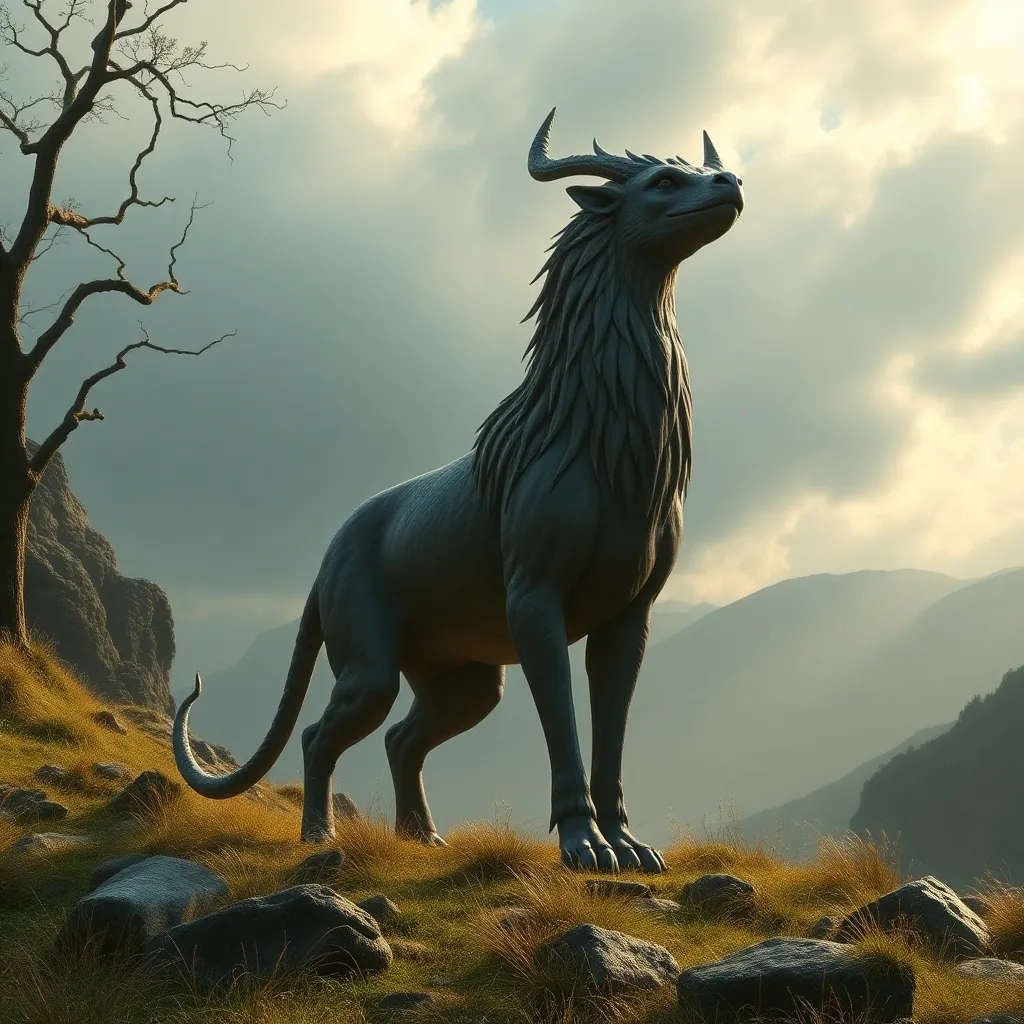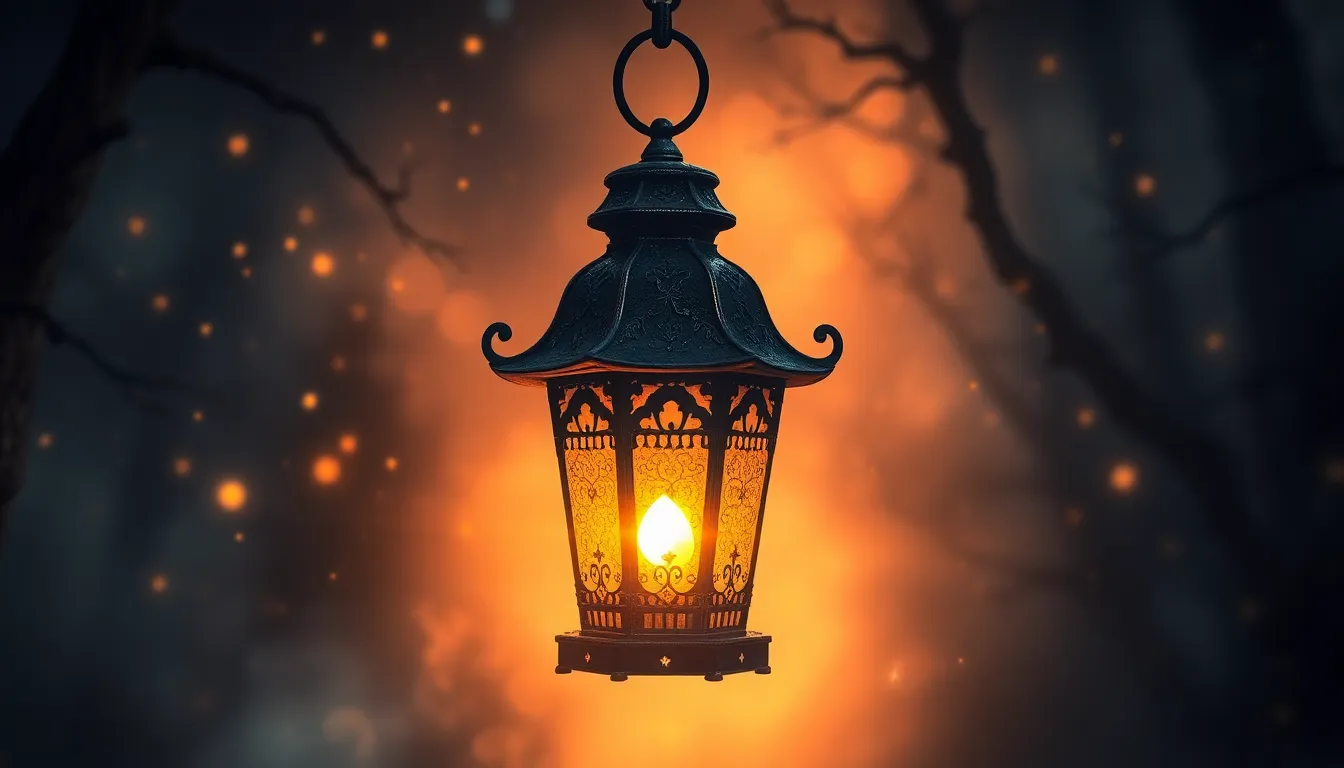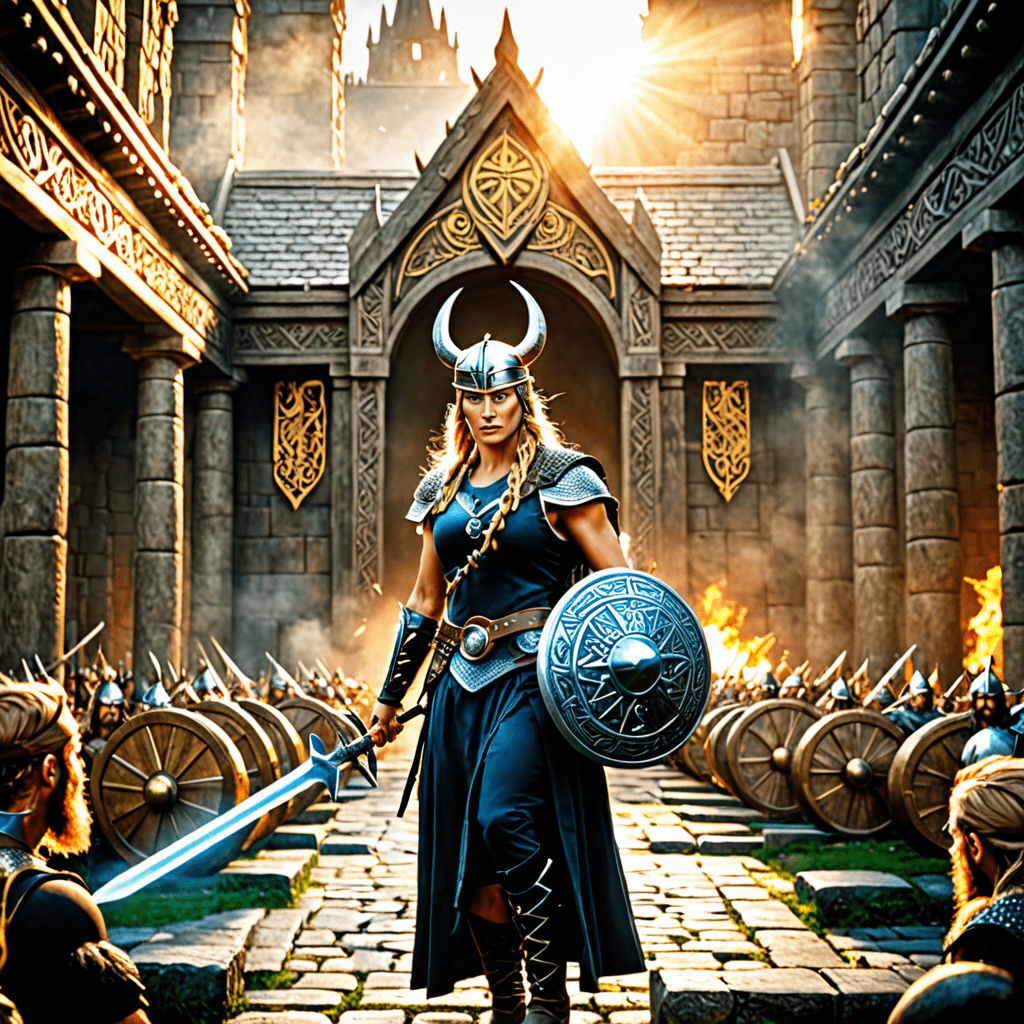The Peryton and the Tuatha Dé Danann: Exploring Celtic Mythological Crossovers
I. Introduction
Celtic mythology is a rich and intricate tapestry woven from tales of gods, heroes, and mystical creatures that have captivated audiences for centuries. Among these enchanting figures are the Peryton and the Tuatha Dé Danann, both of which embody unique aspects of this ancient lore. The Peryton, a mythical creature often depicted as a hybrid of a deer and a bird, represents themes of transformation and nature. In contrast, the Tuatha Dé Danann are a race of supernatural beings revered as deities in Irish mythology, who inhabit the Otherworld. This article aims to explore the connections and crossovers between these two compelling mythological elements, shedding light on their significance within Celtic tradition.
II. Understanding the Peryton
A. Description of the Peryton: origins and characteristics
The Peryton is a fascinating creature that first appeared in the works of early 20th-century authors, particularly in the writings of H.P. Lovecraft and later in fantasy literature. Traditionally, the Peryton is described as having the body of a deer and the wings and head of a bird, often depicted soaring through the skies or roaming the forests. Its origins are somewhat ambiguous, drawing influences from various mythologies, but it embodies the duality of land and air.
B. The Peryton in various mythologies and folklore
While the Peryton is most prominently featured in modern fantasy, its characteristics resonate with various mythological themes found across cultures. Similarities can be drawn to creatures like the Griffin or the Harpy, which also blend animal forms and symbolize different aspects of nature. Its presence in literature has evolved, often symbolizing a deeper connection between the earthly realm and the celestial.
C. Symbolism and significance in Celtic culture
In Celtic culture, animals often hold significant symbolic meanings. The Peryton, as a hybrid creature, can be interpreted as a symbol of transformation and the interconnectedness of life. It embodies the idea of duality—whereby the earthly and the ethereal meet. This theme of transformation is prevalent in many Celtic tales, where characters undergo physical and spiritual changes, reflecting the cyclical nature of life and death.
III. The Tuatha Dé Danann: A Brief Overview
A. Origins and key figures of the Tuatha Dé Danann
The Tuatha Dé Danann, translated as “the People of the Goddess Danu,” are central figures in Irish mythology. They are considered a divine race, descended from the goddess Danu, and are known for their supernatural abilities, wisdom, and craftsmanship. Key figures include Lugh, the god of skills and arts; Dagda, the father figure and deity of fertility; and Brigid, the goddess of poetry and healing.
B. Their role in Irish mythology and the concept of the Otherworld
The Tuatha Dé Danann play a crucial role in Irish mythology, often depicted as the guardians of the Otherworld—a mystical realm that intertwines with the human world. This Otherworld is characterized by eternal youth, beauty, and abundance, reflecting the ideals of Celtic spirituality. The Tuatha are often portrayed as protectors of nature and the earth, embodying the harmony and balance that is central to Celtic beliefs.
C. Cultural significance and legacy in Celtic traditions
The legacy of the Tuatha Dé Danann extends beyond mythology into modern culture. Their stories have influenced countless works of literature, art, and folklore, shaping the understanding of Celtic identity and spirituality. They symbolize the deep connections between humans, nature, and the divine, serving as reminders of the cultural values that cherish wisdom, creativity, and the natural world.
IV. Crossover Themes: Nature and Transformation
A. Examination of nature in both the Peryton and the Tuatha Dé Danann
Both the Peryton and the Tuatha Dé Danann are deeply intertwined with nature. The Peryton, as a creature that embodies both deer and bird, symbolizes the melding of terrestrial and aerial realms. Similarly, the Tuatha Dé Danann are often depicted as guardians of the natural world, with their stories reflecting a profound respect for the environment and its cycles.
B. Themes of transformation and duality in Celtic mythology
Transformation is a recurring theme in Celtic mythology, with characters frequently undergoing physical, emotional, or spiritual changes. The Peryton’s hybrid nature exemplifies this theme, representing the duality of existence. Likewise, the Tuatha Dé Danann are often associated with metamorphosis, as they possess the ability to change form and transcend boundaries, further emphasizing the interconnectedness of all life.
C. Analysis of how these themes manifest in their stories
The stories surrounding the Peryton and the Tuatha Dé Danann often highlight their transformative abilities. For instance, the Peryton is sometimes portrayed as a harbinger of change or a guide through the unknown. In contrast, the Tuatha Dé Danann’s narratives often involve quests for knowledge or the retrieval of lost treasures, symbolizing the journey of self-discovery and personal growth.
V. The Role of Animals in Celtic Mythology
A. The importance of animals in the lore of the Tuatha Dé Danann
Animals occupy a significant place in the lore of the Tuatha Dé Danann, often serving as companions, symbols, or embodiments of various attributes. They are frequently depicted in myth as possessing magical qualities or acting as messengers between realms. This highlights the belief in the spiritual connection between humans and the animal kingdom.
B. The Peryton’s unique position as a hybrid creature
The Peryton stands out in Celtic mythology due to its hybrid nature, which challenges the boundaries between species. This unique position allows it to embody multiple characteristics, serving as a symbol of the complexities of existence and the blurred lines between different forms of life.
C. How animal symbolism intertwines with the identities of both the Peryton and the Tuatha Dé Danann
Animal symbolism plays a crucial role in shaping the identities of both the Peryton and the Tuatha Dé Danann. The Peryton’s deer-like and bird-like aspects represent agility, freedom, and a connection to the earth, while the Tuatha Dé Danann’s interactions with animals reflect their status as guardians of nature and their ability to communicate with the spirit world.
VI. Comparative Analysis of Narrative Functions
A. Storytelling roles of the Peryton and the Tuatha Dé Danann
In storytelling, both the Peryton and the Tuatha Dé Danann serve distinct yet complementary roles. The Peryton often appears as a mystical creature that challenges heroes, guiding them toward personal growth or revealing hidden truths. Conversely, the Tuatha Dé Danann represent the ideal of wisdom and skill, often serving as mentors or obstacles in the hero’s journey.
B. Exploration of heroism, morality, and mythic journeys
The narratives surrounding the Peryton and the Tuatha Dé Danann frequently explore themes of heroism and morality. Heroes are often tested by their encounters with these beings, facing challenges that require them to demonstrate courage, wisdom, and respect for nature. This reflects the broader societal values of Celtic culture, which emphasizes harmony with the environment and the importance of understanding one’s place within it.
C. How their narratives reflect societal values and beliefs
The stories involving the Peryton and the Tuatha Dé Danann mirror the values and beliefs of Celtic society. They highlight the significance of nature, the importance of transformation, and the interconnectedness of all beings. These narratives serve as vehicles for teaching moral lessons and preserving cultural heritage, ensuring that the wisdom of the past continues to resonate in contemporary society.
VII. Modern Interpretations and Cultural Impact
A. The resurgence of interest in Celtic mythology in contemporary culture
In recent years, there has been a notable resurgence of interest in Celtic mythology, with many people seeking to reconnect with their cultural roots. This revival is evident in literature, art, film, and even gaming, where Celtic themes and figures are increasingly prominent.
B. Representation of the Peryton and the Tuatha Dé Danann in literature, art, and media
The Peryton and the Tuatha Dé Danann have found new life in modern storytelling. From fantasy novels to films, these mythological elements are being reimagined and adapted for contemporary audiences. The Peryton often appears as a symbol of mystery and transformation, while the Tuatha Dé Danann are portrayed as powerful beings that embody the complexity of nature and human experience.
<h



